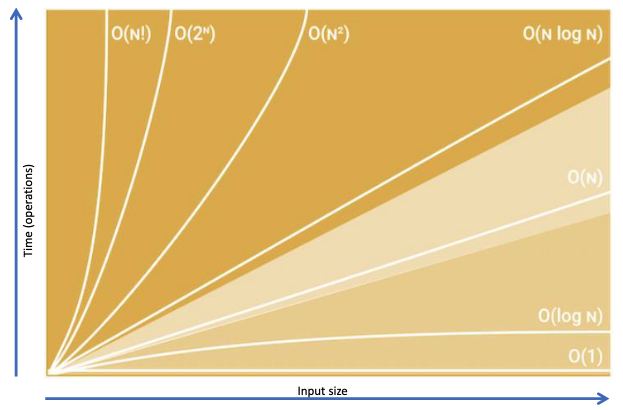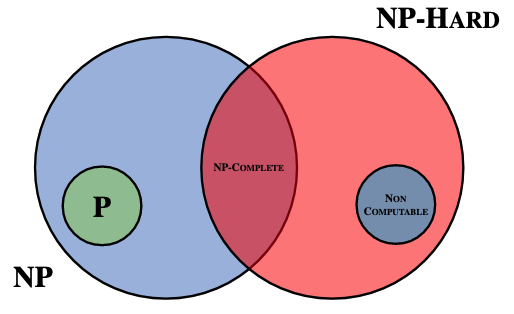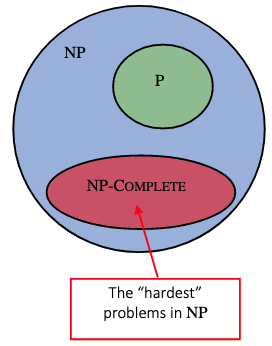The asymptotic analysis of an algorithm determines the running time in Big O notation.
To perform the asymptotic analysis:
- We find the worst-case number of primitive operations executed as a function of the input size, .
- We express this function with Big O notation.
Big O notation defines an upper bound of an algorithm (worst-case).
The runtime in terms of how quickly it grows is relative to the input, as the input gets larger.
More info here (Time Complexity).
Big-O Runtime Analysis
- Find out the input and what represents.
- Calculate the primitive operations of the algorithm in terms of .
- Drop the lower-order terms.
- Remove all constant factors.

Example
The algorithm ArrayMax executes at most primitive operations.
We say that algorithm ArrayMax runs in time.
Since constant factors and lower-order terms are eventually dropped, we can disregard them when counting primitive operations.
We do not have to be 100% accurate as long as we get he powers of correct.
Rank from Fast to Slow
| Before | After |
|---|---|
Polynomial Time
An algorithm is solvable in polynomial time if the number of steps required to complete the algorithm for a give input is for some non-negative integer , being the complexity of the input.
The Classes of Algorithms
Problems are divided up into a number of classes (classifications):
- Computable:
- Problems that can be solved using a computer.
- For example: .
- Non-computable:
- Problems that cannot can be solved using a computer.
- For example: Halting Problem.
P and NP problems
Algorithms are divided up into a number of classes (classifications):
- P problems:
- Solved in a reasonable amount of time (polynomial time).
- For example: multiplication and sorting.
- NP problems:
- Difficult to solve in a reasonable amount of time but easy to verify the solution.
- Problems involving decision making.
- Important class of problems, for example job scheduling, circuit design and vehicle routing.

- NP-hard problems:
- Very, very difficult to solve problems, which cannot be done in a reasonable amount of time.
- They are very difficult to verify in polynomial time.
- NP-complete problems:
- The hardest problems in NP set.
- Complexities greater than polynomial time.
- Verifiable in polynomial time.
- No polynomial-time algorithm is discovered for any NP-complete problem.
- Nobody was able to prove that no polynomial-time algorithm exist for any of the problems.
If a polynomial time algorithm is found for any problem in NP-complete then every problem in NP can be solved in polynomial time.

More info here (P vs NP problems).
Examples
- The travelling salesperson problem.
- Finding the shortest common superstring.
- Checking whether two finite automate accept the same language.
- Given three positive integers
a,b, andc, do there exist positive integers (xandy) such that .